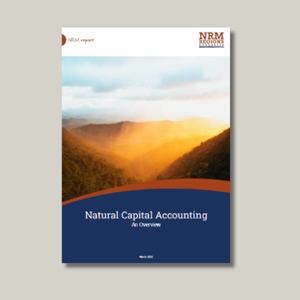Natural capital accounting
Natural capital accounting is also referred to as environmental-economic accounting.
It provides a way to measure and monitor the health and value of natural assets and the services they provide. By understanding the extent and condition of our natural capital and the services and benefits it generates, decision makers are better informed of the impacts, dependencies and outcomes of their policies and actions.
In general, natural capital accountants have a background in economics or accounting. They use traditional accounting methods (including the concepts of assets, liabilities and balance sheets) in conjunction with geo-spacial data and other relevant information.
Natural capital accounting can be used to determine the:
- extent of a natural capital asset – what it is, where it is and how big it is
- condition of an asset – how healthy it is
- services an asset provides – this might include cleaning the air, reducing erosion or providing other ecosystem services
- benefits an asset provides – this might include health and wellbeing for local communities, food and fibre and providing tourism opportunities.



